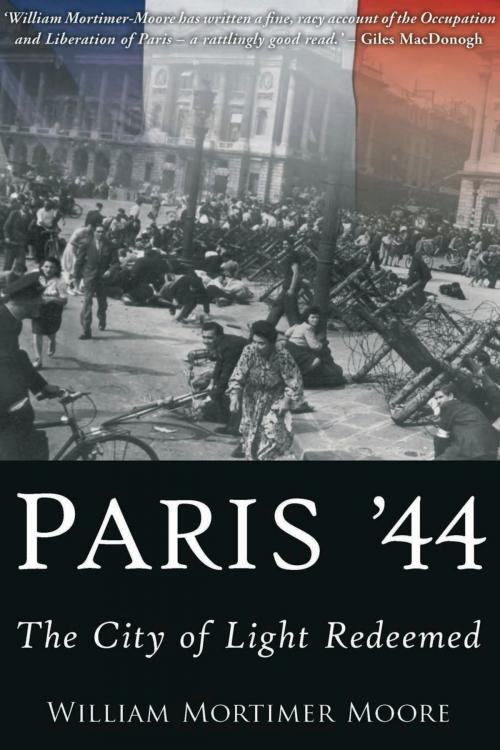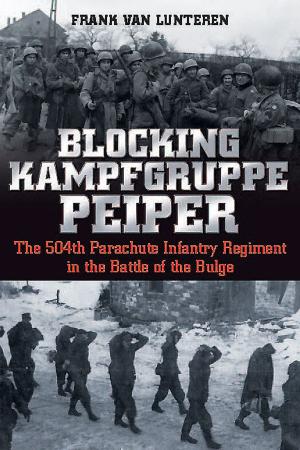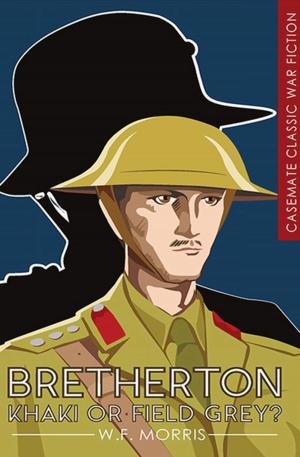| Author: | William Mortimer Moore | ISBN: | 9781612003443 |
| Publisher: | Casemate | Publication: | November 19, 2015 |
| Imprint: | Casemate | Language: | English |
| Author: | William Mortimer Moore |
| ISBN: | 9781612003443 |
| Publisher: | Casemate |
| Publication: | November 19, 2015 |
| Imprint: | Casemate |
| Language: | English |
During the fall of 1944, once the Western Allies had gained military advantage over the Nazis, the crown jewel of Allied strategy became the liberation of Paris—the capital of France so long held in captivity.
This event, however, was steeped in more complexity when the Allies returned than in 1940 when Hitler’s legions first marched in. In 1944 the city was beset by cross-currents about who was to reclaim it. Was it to be the French Resistance, largely ephemeral throughout the war and largely Communist? Or was it to be the long-suffering Parisians themselves, many of them meantime collaborators? Or the Anglo-American armies which had indeed won the victory?
Then there were the Free French forces led by Charles de Gaulle, and his second, General Leclerc, who now led a full (albeit American-supplied) armored division? The Germans, too, still retained a hand, with the option to either destroy the city, per Hitler’s wishes, or honorably cede it.
This book punctures the myth parlayed by Is Paris Burning? and other works
that describe the city's liberation as mostly the result of the insurrection by the Resistance in the capital. In fact, de Gaulle gave Leclerc his orders for the liberation of the city as early as December 1943, and the General’s great march down the Champs Élysées the day after the liberation was the culmination of a carefully laid plan to re-establish the French state.
Amidst the swirling streams of self-interest and intrigue that beset the capital on the eve of its liberation, this book makes clear that Leclerc and his 2nd Armoured Division were the real heroes of the liberation and that marching on their capital city was their raison d'etre. At issue was the reconstitution of France itself, after its dark night of the soul under the Germans, and despite the demands of the Anglo-Americans and France’s own insurrectionists. That a great power was restored is now manifest, with this book explaining how it was ensured.
During the fall of 1944, once the Western Allies had gained military advantage over the Nazis, the crown jewel of Allied strategy became the liberation of Paris—the capital of France so long held in captivity.
This event, however, was steeped in more complexity when the Allies returned than in 1940 when Hitler’s legions first marched in. In 1944 the city was beset by cross-currents about who was to reclaim it. Was it to be the French Resistance, largely ephemeral throughout the war and largely Communist? Or was it to be the long-suffering Parisians themselves, many of them meantime collaborators? Or the Anglo-American armies which had indeed won the victory?
Then there were the Free French forces led by Charles de Gaulle, and his second, General Leclerc, who now led a full (albeit American-supplied) armored division? The Germans, too, still retained a hand, with the option to either destroy the city, per Hitler’s wishes, or honorably cede it.
This book punctures the myth parlayed by Is Paris Burning? and other works
that describe the city's liberation as mostly the result of the insurrection by the Resistance in the capital. In fact, de Gaulle gave Leclerc his orders for the liberation of the city as early as December 1943, and the General’s great march down the Champs Élysées the day after the liberation was the culmination of a carefully laid plan to re-establish the French state.
Amidst the swirling streams of self-interest and intrigue that beset the capital on the eve of its liberation, this book makes clear that Leclerc and his 2nd Armoured Division were the real heroes of the liberation and that marching on their capital city was their raison d'etre. At issue was the reconstitution of France itself, after its dark night of the soul under the Germans, and despite the demands of the Anglo-Americans and France’s own insurrectionists. That a great power was restored is now manifest, with this book explaining how it was ensured.















